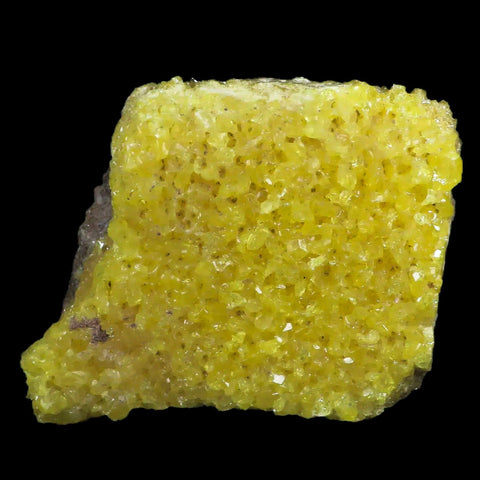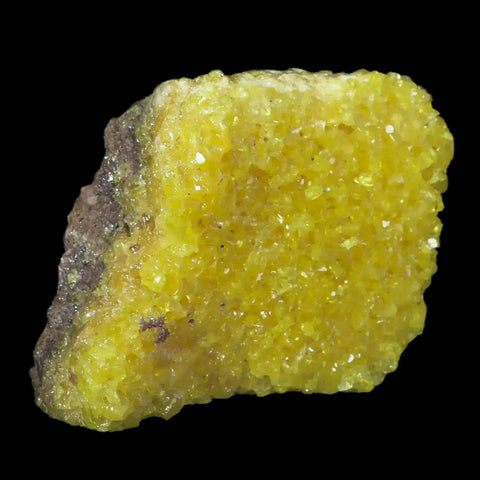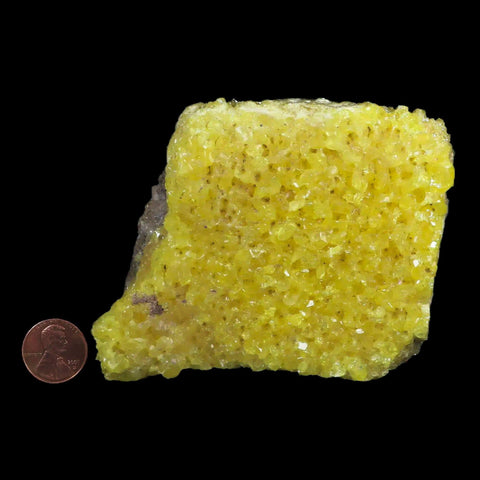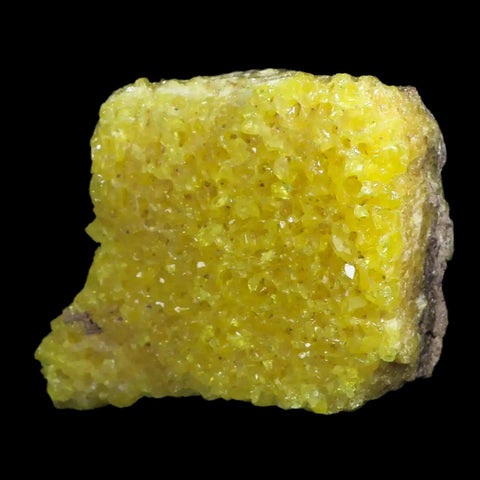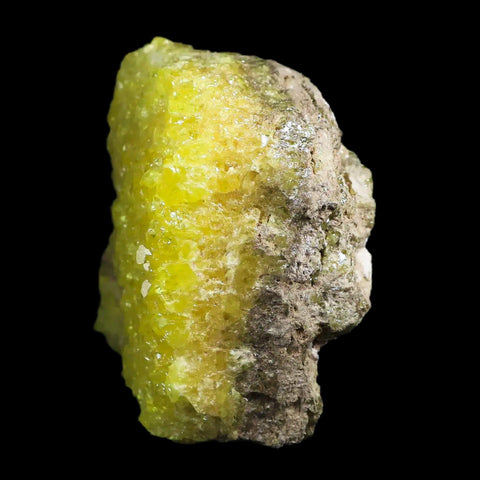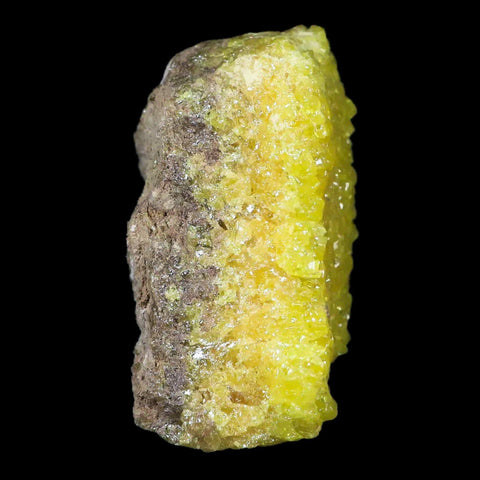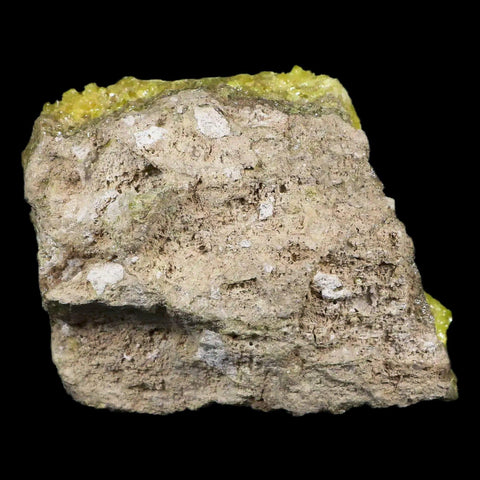3.8" Rough Bright Yellow Sulfur Crystal Cluster On Matrix El Desierto Mine Bolivia
Location: El Desierto Mine, Payun Matru Volcano, Matlargue, Mandoza, Bolivia
Weight: 14.4 Ounces
Dimensions: 3.8 Inches Long, 3.1 Inches Wide, 2 Inches Thick
The item pictured is the one you will receive.
Sulfur, often spelled "sulphur" in some regions, is a chemical element with the symbol S and atomic number 16. It is abundant in nature and occurs in various forms, including pure elemental sulfur, sulfide minerals, sulfate minerals, and organic compounds. Typically a bright yellow solid at room temperature, sulfur has a distinctive odor often compared to rotten eggs.
In Louisiana, sulfur has been historically significant due to its unique geological formation and economic importance. The state’s sulfur deposits are primarily associated with the caprock of salt domes, a common geological structure in the Gulf Coast region. These deposits formed through bacterial sulfate reduction, where bacteria reduce anhydrite (calcium sulfate) using hydrocarbons, producing hydrogen sulfide. The hydrogen sulfide then reacts with oxygenated groundwater to form elemental sulfur, giving Louisiana’s deposits a biogenic origin that distinguishes them from volcanic or other sources.
Early sulfur mining faced challenges due to unconsolidated sediments and quicksand. The development of the Frasch process by Herman Frasch revolutionized extraction. This method injected superheated water into sulfur-bearing formations, melting the sulfur and pumping it to the surface with compressed air. Frasch-mined sulfur, often called brimstone, was of very high purity and essential for producing sulfuric acid, fertilizers, chemicals, and explosives. While direct mining has largely ceased, these deposits remain a vital part of Louisiana’s industrial heritage.


